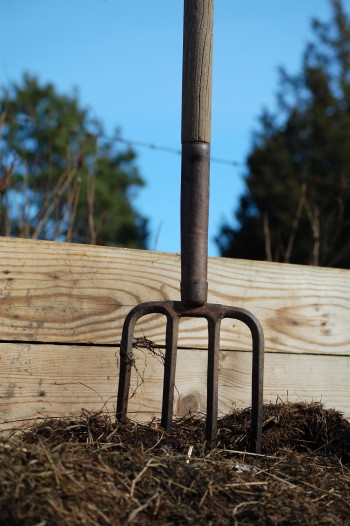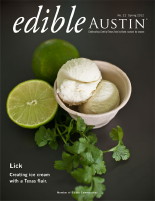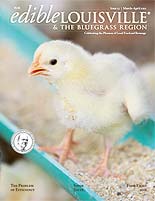 Last Wednesday, I got on a plane to California kicking and screaming. Or I should say, I got in the car to drive to the ferry to get to the mainland to drive to Boston to get on the first of three airplanes to Santa Barbara. This is how it is with me these days: I hate to travel. I’ve always been a homebody, but I’ve never loved a “home” (and all that goes with it) quite as much as I do now. I just hate to leave the Island.
Last Wednesday, I got on a plane to California kicking and screaming. Or I should say, I got in the car to drive to the ferry to get to the mainland to drive to Boston to get on the first of three airplanes to Santa Barbara. This is how it is with me these days: I hate to travel. I’ve always been a homebody, but I’ve never loved a “home” (and all that goes with it) quite as much as I do now. I just hate to leave the Island.
But flying back on Sunday, as I began to write this blog somewhere over Nebraska, I had to smile at myself: getting out every once in a while is good for me! (Except for the part about nearly missing my first plane on Sunday due to, uh, my ignorance of Daylight Savings Time. That nearly did me in.)
I have no right to complain, as I was invited to attend the annual Edible magazine publishers conference and the Edible Institute that followed after it. There are now 72 Edible magazines, including, of course, our own very fabulous Edible Vineyard, as well as our neighbors Edible Cape Cod, Edible Boston, and Edible Rhody.

 The absolute coolest thing about these magazines is, in fact, that they’re local. No national magazine can connect you to the local food movement in your own backyard like these guys can. But there’s also a collective inspiration in the group as a whole. When you sit down to read a stack of these magazines (as I did in preparation for my trip), you see that everywhere across the country from Portland to Orlando, local heroes—fishermen, school lunch cooks, cheese makers, beer brewers, market organizers—are tackling the crazy problems in our food system one town, one day, one meal at a time.
The absolute coolest thing about these magazines is, in fact, that they’re local. No national magazine can connect you to the local food movement in your own backyard like these guys can. But there’s also a collective inspiration in the group as a whole. When you sit down to read a stack of these magazines (as I did in preparation for my trip), you see that everywhere across the country from Portland to Orlando, local heroes—fishermen, school lunch cooks, cheese makers, beer brewers, market organizers—are tackling the crazy problems in our food system one town, one day, one meal at a time.
In Santa Barbara, I got to meet and listen to some of these local heroes, as well as some national heroes, too. I had a quirky, peripheral duty at the conference: I was there to coach Edible publishers about magazine editing—that particularly funny skill I honed for many years and am now able to pass along from time to time. (It’s a change of pace from cooking and farmette-ing for sure!) But after teaching my classes on Thursday and Friday, I got to hang around on Saturday for the first day of the Edible Institute, a gathering of sustainable food folks put together by Tracey Ryder, co-founder of Edible Communities, and Bruce Cole, publisher of Edible San Francisco.
Listening to the speakers, I was alternately charmed and horrified. Charmed by the likes of Anna Larsen, an outgoing San Francisco entrepreneur (and part-time opera singer) who’s created a seafood CSA (Or CSF)—a way to link consumers directly with their fishermen. Larsen buys fish and shellfish that’s no more than 48 hours out of the water directly from the fishermen, then has it skinned and filleted, and gets it to her weekly subscribers the very next day. Larsen’s “Siren SeaSA” has a long waiting list, despite the fact that customers don’t always know what they’re getting until the last minute and they might get something—like whole squid or sardines—that they’ve never eaten before. It’s an exciting idea that I imagine we’ll see growing around the country.
The horrifying part came when book author Jonathan Bloom took the stage. I heard about Bloom’s book, American Wasteland: How America Throws Away Nearly Half of Its Food (and What We Can Do About It), when it first came out a couple years ago. But for some reason the stark reality of this problem did not sink in until I heard him say in person, “Every day in this country we waste enough food to fill the Rose Bowl.” Unbelievable. The food waste starts with growers who discard unmarketable food and it continues on down the line to supermarkets, restaurants, and home fridges. When asked what the most tangible, productive step in the right direction might be, Bloom indicated that European countries are successfully banning organic waste at landfill, and that this could be something we could embrace. (Short, of course, I was thinking, of changing our cultural mindset overnight). In other words, if a truck could not go straight to the landfill with the less-than-perfect tomatoes, the trucking company might start figuring out how to get the tomatoes to a food bank (at best) or a compost area (at least).
There were other moments that completely stopped me—listening to journalist Tracie McMillan talk about working in the garlic fields (in 100-plus-degree heat for $2 an hour) for her undercover work for her new book, The American Way of Eating: Undercover at Walmart, Applebee’s, Farm Fields and the Dinner Table was certainly one; watching a clip of Roberto Romano’s film The Harvest/La Cosecha, about child farm laborers in America, was another.
But there were plenty of hopeful moments, too, and I have to leave you with my most favorite. Watch this episode of The Perennial Plate, and you’ll see the work of a young chef and a young filmmaker who have driven around the country making a weekly documentary about real food, about cooking, about life. (This episode, “God’s Country,” stole my heart, but there are plenty more to watch online.) Both Daniel Klein and Mirra Fine are lovely and down-to-earth in person. They said they might be visiting the Vineyard some time soon—great news!
Now if I hadn’t gotten on that plane for Santa Barbara, I would have missed a lot. Sometimes my plate seems full enough, but then I realize I’m the kind of person who’s never been shy about second helpings. And I have to remind myself that if you’re someone who cares a lot about how the world eats, every once in a while you’ve got to sit down at the table with strangers.

Oh, Susie,
You are such a great writer with heaping helpings of lovely inspiration infused with giggles. Thanks for taking the trip for this homebody and bringing home the goods.
Tina
Tiny, you are too kind. Hope everything’s good on the farm!!